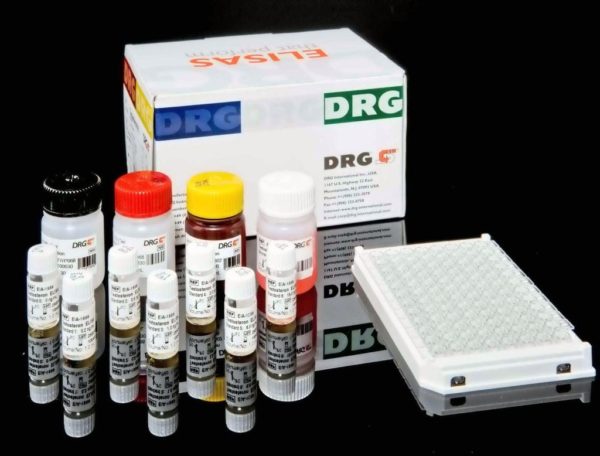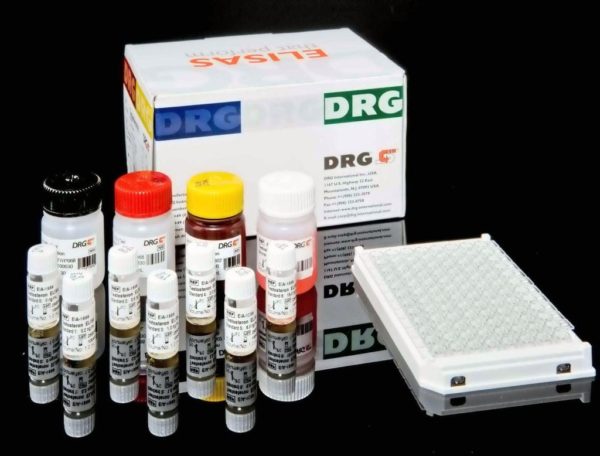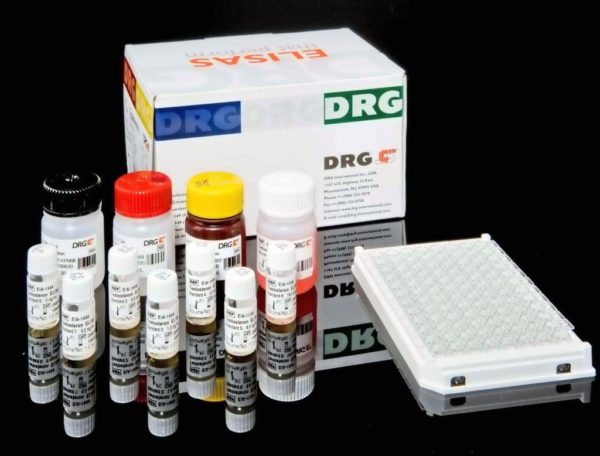Description
INTRODUCTION
Intended Use
An Enzyme Immunoassay for the in vitro diagnostic quantitative measurement of free active testosterone in saliva.
Measurement of testosterone is used in the diagnosis and treatment of disorders involving the male sex hormones (androgens), including primary and secondary hypogonadism, delayed or precocious puberty, impotence in males and, in females hirsutism (excessive hair) and virilization (masculinization) due to tumors, polycystic ovaries, and adrenogenital syndromes.
Summary and Explanation
Testosterone (17_-hydroxy-4-androstene-3-one) is a C19 steroid with an unsaturated bond between C-4 and C-5, a ketone group in C-3 and a hydroxyl group in the _ position at C-17. This steroid hormone has a molecular weight of 288.4 daltons. Testosterone is the most important androgen secreted into the blood. In males, primarily the Leydig cells of the testis secrete testosterone; in females approximately 50% of circulating testosterone is derived from peripheral conversion of androstenedione, approximately 25% from the ovary and 25% from the adrenal glands.
Testosterone is responsible for the development of secondary male sex characteristics and its measurements are helpful in evaluating the hypogonadal status (1-4). In women high levels of testosterone are generally found in hirsutism and virilisation, polycystic ovaries, ovarian tumors, adrenal tumors and adrenal hyperplasia (5-7). In men high levels of testosterone are associated with hypothalamic-pituitary-unit dysfunction, testicular tumors, congenital adrenal hyperplasia and prostate cancer. Low levels of testosterone are encountered in male patients with the following diseases:
Klinefelter«s syndrome. Hypopituitarism, testicular feminization, orchidectomy, cryptorchidism, enzymatic defects and some autoimmune diseases (8).
PRINCIPLE OF THE TEST
The DRG Salivary Testosterone ELISA Kit is based on the competition principle and the microplate separation. An unknown amount of free testosterone present in the sample and a fixed amount of testosterone conjugated with horseradish peroxidase compete for the binding sites of mouse monoclonal testosterone antiserum coated onto the wells. After one-hour incubation the microplate is washed to stop the competition reaction. After addition of the substrate solution the concentration of testosterone is inversely proportional to the optical density measured.




